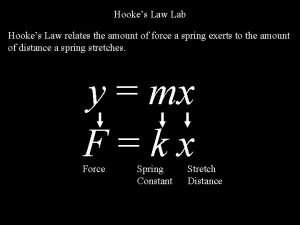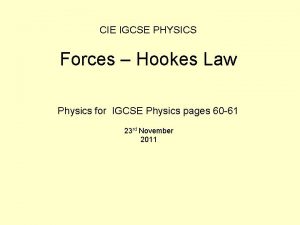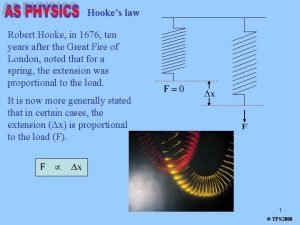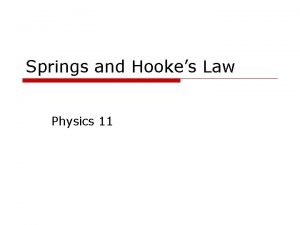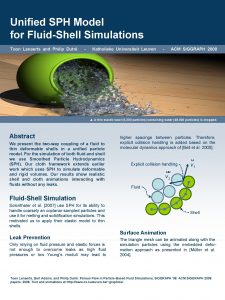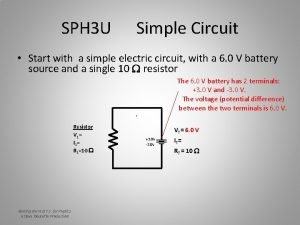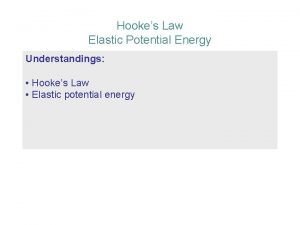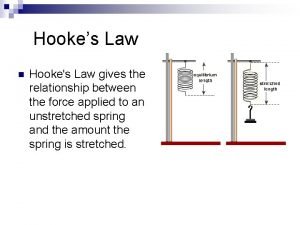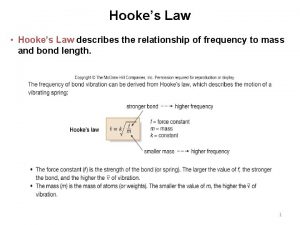Elastic Energy SPH 3 U Hookes Law A










- Slides: 10

Elastic Energy SPH 3 U

Hooke’s Law • A mass at the end of a spring will displace the spring to a certain displacement (x). • The restoring force acts in springs to try and return the spring to its un-stretched state • This force opposes the displacement and follows Hooke’s Law: F = - kx • The “k” is a constant for each material in Nm-1.

Hooke’s Law • F = - kx • The – sign can be omitted from problem solving as it only indicates that the force direction is opposite to the displacement direction. • This is not a constant force as force increases with x (so does the acceleration too). • The force of gravity is balanced by the spring force when a mass is at rest hanging from the spring.

Example 1 • A spring stretches 0. 150 m when 0. 300 kg hangs from it. Find the spring constant. • When the mass hangs from the spring, the weight of the mass is equal to the restoring force. F = |-kx| = |mg| k = [(0. 300 kg) (9. 81 ms-2)]/[0. 150 m] = 19. 6 Nm-1

Example 2 • The force constant of a spring is 48. 0 Nm-1. It has a 0. 25 kg mass suspended from it. What is the extension of the spring? F = |-kx| and F = mg x = 0. 051 m • Note: A compressed spring has a “-“displacement.

Elastic Potential Energy • Elastic potential energy is stored in an object if there is no net deformation. • This means that the object can return to its original form. • Work put into extending a spring, for example, is equal to the work released by the spring when it returns to its natural shape. (Some or little heat results. ) • Other examples are: trampolines, elastic bands, etc.

Elastic Potential Energy • F = kx in the elastic region only. • The slope is the spring constant k that varies with material. (Nm-1)

Elastic Potential Energy • The energy stored in a spring is equal to the work done to displace the spring which is represented by the area under the graph for the elastic region. • Area = (1/2) base height = (1/2) F x = (1/2) kx 2 • Eel = (1/2) kx 2 (again measured in Joules)

Example 1 • Find the elastic potential energy of a spring (k = 160 N/m) compressed 8. 0 cm. Eel= (1/2) kx 2 = (1/2) (160 Nm-1) (-0. 080 m)2 = 0. 51 J

Example 2 • A 0. 50 kg hockey puck slides at 15. 0 ms-1. It hits a spring loaded bumper (k = 360 Nm-1); how much does the bumper spring compress at maximum compression? • The puck loses Ek to do work to compress the spring; - ∆Ek = ∆Eel -(0 - (1/2) mv 2) = (1/2) kx 2 - 0 x = ± 0. 56 m As compressed, x = -0. 56 m

